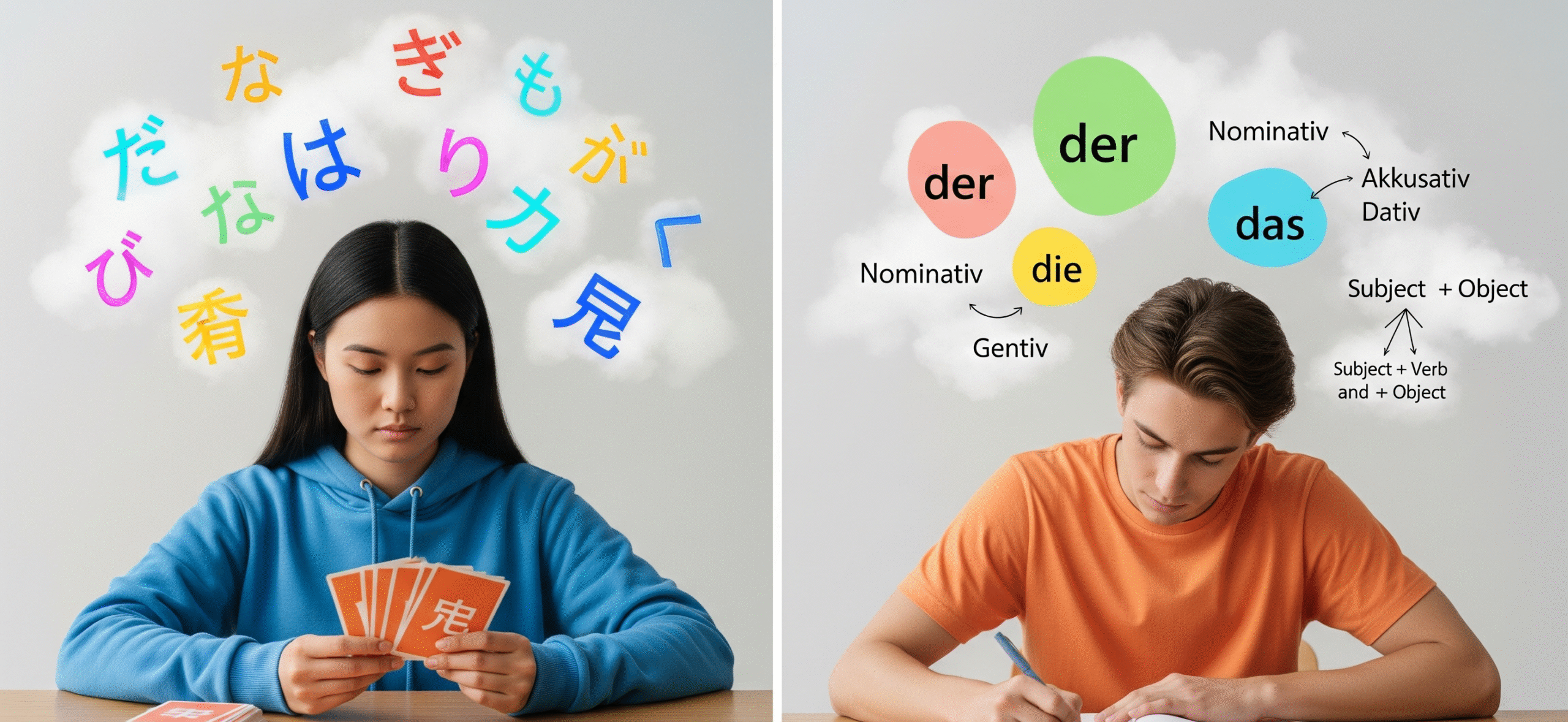Japanese Kanji vs German Grammar: Which Is Tougher?

Both Japanese and German have a reputation for being “hard languages.” But the challenges they bring are totally different. If you’re stuck choosing which one to learn, here’s a breakdown of what makes Kanji and German grammar tough—and what you can do about it.
🔡 Japanese Kanji: The Memory Mountain
Japanese uses thousands of Kanji characters, each with its own meaning and multiple readings (pronunciations).
Learning them isn’t about just recognizing the shape—you need to know context. For example: 生 can mean “life,” “raw,” or “student,” depending on usage.
The toughest part: consistency. You have to keep reviewing, or you’ll forget.
📏 German Grammar: The Rule Jungle
German grammar is all about cases, genders, and word order.
Every noun has a gender (der, die, das), and you have to change articles and endings depending on the case (nominative, accusative, dative, genitive).
Sentences can twist around because verbs often go to the end, which confuses beginners.
🧠 Which One Challenges Memory More?
Kanji requires long-term memorization and constant practice.
German grammar requires remembering rules and applying them instantly while speaking.
Both test your brain in different ways: Kanji = visual memory, Grammar = logical processing.
🎯 Which One Is More Practical to Tackle?
If you like visuals and repetition, you might find Kanji more “fun” despite being heavy on memory.
If you enjoy structure, patterns, and logical puzzles, German grammar could feel more manageable.
Neither is “easy”—but your learning style decides which feels tougher.
Final Takeaway
Japanese Kanji and German grammar are both challenging—but in different ways. Kanji is about sheer memory power, while German grammar is about mastering complex rules. The winner? It depends on your brain’s comfort zone: memory vs logic.